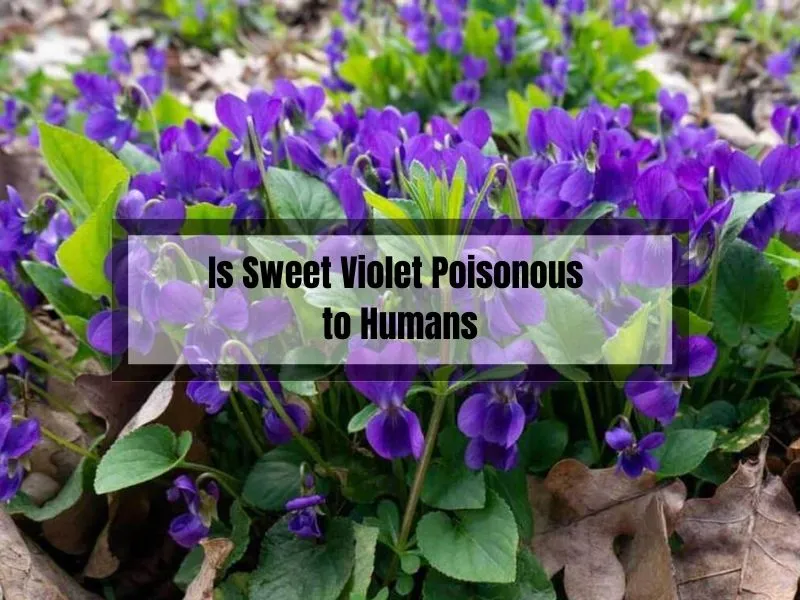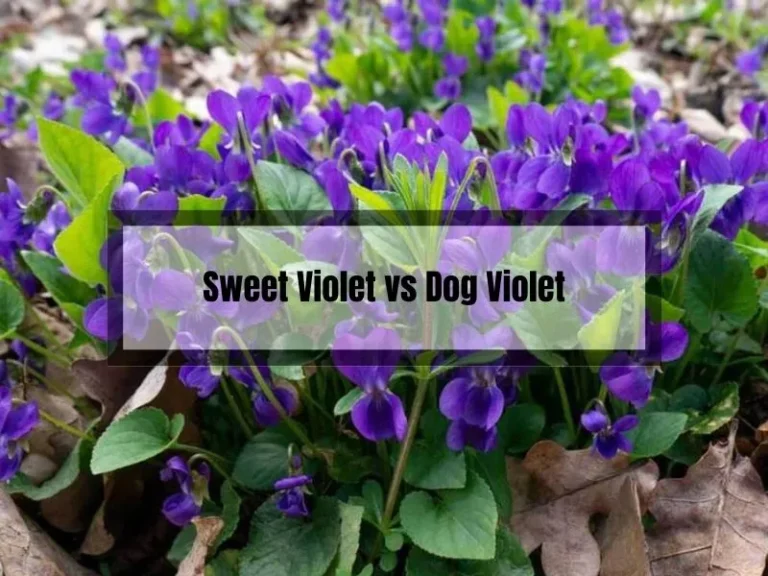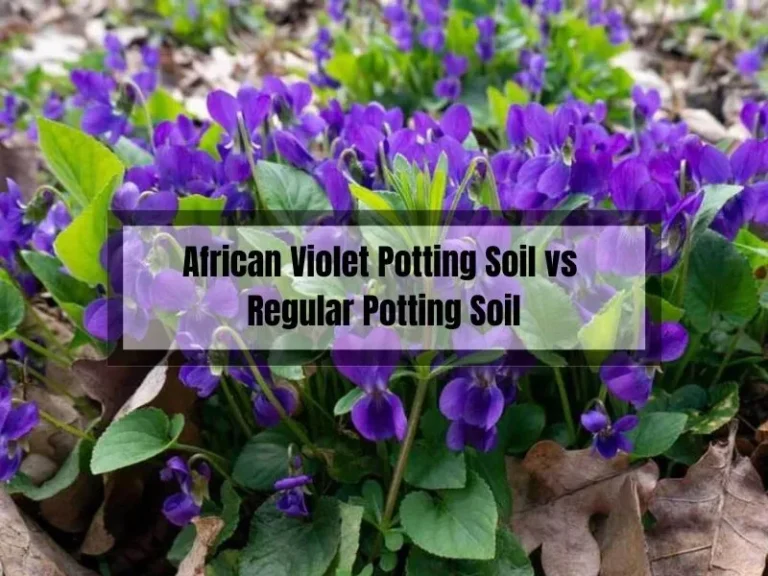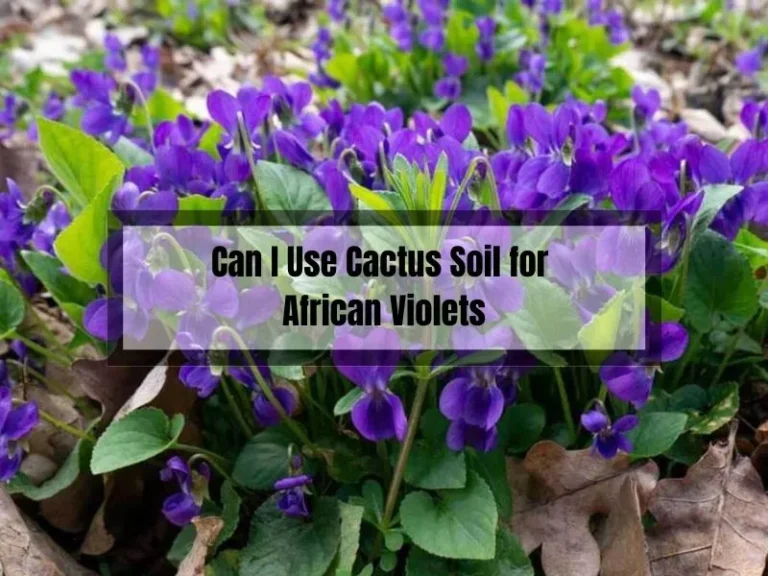Is Sweet Violet Poisonous to Humans? Facts You Need to Know
Curious about Sweet Violet’s edibility? Contrary to some mixed opinions, Sweet Violet is safe for human consumption, with both its leaves and flowers being edible and a part of culinary traditions for centuries. These delicate parts can enhance various dishes, including salads and syrups.
Sweet Violet is an herb with a long history in traditional medicine. Its roots and above-ground parts are used for various medicinal purposes, such as alleviating stress, fatigue, insomnia, menopausal symptoms, depression, and even the common cold.
Recognizable for its vibrant purple springtime blooms, it’s crucial to distinguish Sweet Violet from its numerous look-alike species, many of which are toxic. Always ensure a positive identification before harvesting.

Is Sweet Violet Poisonous to Humans?
The good news is that sweet violet is not poisonous to humans. In fact, its leaves and flowers are entirely edible and have been enjoyed in culinary creations for centuries. These delicate petals and foliage can be used in a variety of dishes, such as salads and syrups.
However, not all flowers are edible; some, like monkshood, are toxic to humans and animals. Therefore, always research and confirm the edibility of any flowers you plan to use in your dishes.
Sweet violet is generally considered safe, with potential adverse effects mainly related to high saponin content in the roots, which is a concern only if used improperly or in excessive doses.
When harvesting sweet violets, consult a reliable plant identification guide to ensure you have the correct plant, as there are many look-alikes, some of which can be inedible or toxic.
How Does Sweet Violet Affect the Human Body
Sweet violet, also known as Viola odorata, is a flowering plant that has been used for medicinal purposes for centuries. While it is generally considered safe to consume, it is important to understand how sweet violet affects the human body.
Nutritional Value
Sweet violet is a good source of vitamins A and C, which are essential for maintaining a healthy immune system.
It also contains flavonoids, which are antioxidants that help protect the body from damage caused by free radicals.
Medicinal Properties
Sweet violet has been used to treat a variety of ailments, including respiratory infections, digestive issues, and skin conditions. It is believed to have anti-inflammatory, expectorant, and diuretic properties.
Side Effects
While sweet violet is generally considered safe to consume, there are some potential side effects to be aware of. These include:
- Allergic reactions: Some people may be allergic to sweet violet and experience symptoms such as itching, hives, and difficulty breathing.
- Stomach upset: Consuming large amounts of sweet violet may cause stomach upset, including nausea and diarrhea.
- Skin irritation: Applying sweet violet to the skin may cause irritation in some people.
It is important to talk to your doctor before using sweet violet for medicinal purposes, especially if you have any underlying health conditions or are taking any medications.
Toxicity
Contrary to popular belief, sweet violet is not toxic to humans. In fact, it is considered safe to consume in the recommended amounts. However, it is important to only consume sweet violet that has been properly identified and prepared, as consuming the wrong plant can be dangerous.
Overall, sweet violet can be a beneficial addition to your diet or medicinal routine. Just be sure to use it responsibly and talk to your doctor before using it for any specific health concerns.
What Are the Symptoms of Sweet Violet Poisoning
Sweet violets (Viola odorata) are beautiful and fragrant flowers that are commonly found in European gardens and cuisine. While they add a touch of elegance to the landscape and the plate, it is important to note that they can be poisonous to humans if ingested.
If you or someone you know has ingested sweet violet, it is important to be aware of the symptoms of sweet violet poisoning. Here are some symptoms to look out for:
- Gastrointestinal distress: Sweet violets contain saponins, which can cause irritation to the gastrointestinal tract. Symptoms may include nausea, vomiting, diarrhea, and abdominal pain.
- Respiratory distress: Ingesting sweet violets can also cause respiratory distress, especially in those with asthma or other respiratory conditions. Symptoms may include difficulty breathing, wheezing, and coughing.
- Skin irritation: Sweet violets contain volatile oils that can cause skin irritation. Symptoms may include redness, itching, and blistering.
If you or someone you know experiences any of these symptoms after ingesting sweet violet, seek medical attention immediately. In severe cases, sweet violet poisoning can be life-threatening.
It is important to note that sweet violet poisoning is rare, and most people will not experience any adverse effects from ingesting sweet violets. However, it is still important to exercise caution and avoid ingesting sweet violets if possible. If you do choose to consume sweet violets, be sure to do so in moderation and only under the guidance of a healthcare professional.
Remember, when it comes to sweet violets, it’s better to be safe than sorry.
How to Treat Sweet Violet Poisoning
If you or someone you know has ingested sweet violet and is experiencing symptoms of poisoning, it is important to seek medical attention immediately. While sweet violet is not poisonous to humans, consuming large quantities of any plant material can cause adverse effects.
Here are some steps you can take to treat sweet violet poisoning:
- Contact Poison Control: If you suspect that someone has ingested sweet violet, contact Poison Control immediately. Poison Control can provide guidance on next steps and help you determine if medical attention is necessary. In the United States, you can call Poison Control at 1-800-222-1222 or visit their website.
- Monitor Symptoms: While sweet violet is not poisonous, consuming large quantities of any plant material can cause adverse effects. Some symptoms of sweet violet poisoning include nausea, vomiting, and diarrhea. If you or someone you know is experiencing these symptoms, monitor them closely and seek medical attention if necessary.
- Drink Plenty of Water: If you or someone you know has ingested sweet violet, it is important to drink plenty of water to help flush the plant material out of your system.
- Seek Medical Attention: If you or someone you know is experiencing severe symptoms of sweet violet poisoning, seek medical attention immediately. In rare cases, consuming large quantities of plant material can cause serious health problems.
Health Benefits and Nutritional Value of Sweet Violet
Sweet violets are more than just a pretty face; they’re also packed with health benefits and nutrients. These little powerhouses contain antioxidants and other beneficial compounds that can support your overall well-being.
The Medicinal Use of Sweet Violet
Sweet violets have been used in herbal medicine for ages, and their potential healing properties are pretty impressive. These lovely little blooms have been used as a natural remedy for respiratory issues, skin conditions, and even anxiety.
While more scientific research is needed to fully understand the medicinal potential of sweet violets, their traditional use in herbal medicine suggests that there’s more to these flowers than meets the eye.
Potential Risks and Precautions
As with anything in life, moderation is key. While sweet violets are generally safe to consume, there are some potential risks and precautions to be aware of:
- Allergic reactions: Some people may be allergic to sweet violets. If you’ve never tried them before, it’s best to start with a small amount and monitor for any signs of an allergic reaction. If you experience any itching, swelling, or difficulty breathing, discontinue use and consult a medical professional.
- Contamination: Wild sweet violets may be exposed to pesticides or other pollutants. If you’re foraging for sweet violets, be cautious of the area you’re harvesting from and always thoroughly wash the flowers and leaves before consuming.
- Proper identification: It’s crucial to correctly identify sweet violets before consuming them. Some lookalike plants may be toxic, so knowing the key characteristics of sweet violets can help you avoid a dangerous mistake.
How to Properly Identify Sweet Violet
To ensure you’re picking the right plant, keep an eye out for the following identifying features of sweet violets:
- Heart-shaped leaves: Sweet violet leaves are heart-shaped with a slightly serrated edge. They’re usually dark green and grow in a rosette pattern.
- Fragrant flowers: Sweet violet flowers have a sweet, captivating scent. The blossoms are typically purple, although white and pink varieties exist as well.
- Five petals: Sweet violet flowers have five petals, with the bottom petal featuring a small spur.
- Growing conditions: Sweet violets are often found in shaded areas, such as woodland edges and forest clearings.
If you’re ever unsure about the identity of a plant, consult an expert or use a reputable field guide to confirm before consuming.
Culinary Uses of Sweet Violet
Now that we’ve established the safety and nutritional benefits of sweet violets, let’s explore some creative ways to incorporate them into your culinary adventures. These delightful blossoms and their tender leaves can add a pop of color, flavor, and fragrance to your dishes.
- Incorporating sweet violet into salads: Sweet violet leaves and flowers can be tossed into a fresh salad for a burst of color and flavor. Their sweet taste complements various salad greens and adds an element of surprise to your meal.
- Making sweet violet syrup: Sweet violet syrup is a delightful concoction that can be drizzled over pancakes, waffles, or ice cream for a floral twist. To make the syrup, simply infuse sugar water with sweet violet petals and strain before using.
- Other creative ways to use sweet violet in the kitchen: Sweet violet can also be incorporated into jellies, jams, and even homemade candies. Its unique flavor and aroma can elevate the taste of your favorite treats, adding an extra layer of sophistication.
Sweet Violet Recipes to Try at Home
Ready to dive into the world of sweet violet culinary creations? Here are some easy and delicious sweet violet recipes to get you started:
- Sweet Violet Tea: Steep sweet violet flowers in hot water to create a soothing, fragrant tea. Add honey or sugar for a touch of sweetness.
- Sweet Violet Sugar: Layer sweet violet petals and sugar in a jar, allowing the sugar to absorb the delicate aroma of the flowers. Use the infused sugar in your baking or sprinkle it on top of your favorite desserts.
- Sweet Violet Panna Cotta: Infuse a classic panna cotta recipe with sweet violet petals for a delicate, floral twist on this creamy dessert.
- Sweet Violet Cupcakes: Incorporate sweet violet flowers into your favorite cupcake recipe for an enchanting and fragrant treat.
FAQs
Can sweet violet be used in the perfume industry?
Absolutely! Sweet violets have a long history of use in the perfume industry due to their captivating, sweet scent. Their fragrance has been used in perfumes, soaps, and other scented products for generations.
Where can sweet violet be found in the wild?
Sweet violet typically grows in shaded areas like woodland edges, forest clearings, and other partially shaded spots. They prefer moist, well-draining soil and can often be found near streams or damp meadows.
Are there any other species of violet that are edible?
Yes, many species of violet are edible, such as the common blue violet (Viola sororia) and the dog violet (Viola riviniana). However, it’s crucial to properly identify the species before consuming, as some lookalike plants may be toxic.
How do I store fresh sweet violet leaves and flowers?
To store fresh sweet violet leaves and flowers, gently wrap them in a damp paper towel and place them in a sealed container or plastic bag. Store the container in the refrigerator, where they should remain fresh for several days.
Can sweet violet be grown in my garden?
Yes, sweet violet can be grown in your garden. The plant prefers partially shaded locations and moist, well-draining soil. Sweet violets make beautiful ground cover plants and can add a pop of color and fragrance to your garden.
Conclusion
Sweet violets are not only beautiful but also safe and edible, offering a world of culinary possibilities. As long as you take precautions by properly identifying the plant, avoiding potential contaminants, and being mindful of allergies, sweet violets can be a delightful addition to your kitchen and garden.
So go ahead and indulge in the sweet, enchanting world of sweet violets and let their captivating fragrance and flavor whisk you away to a realm of floral delight!
Related Posts:



